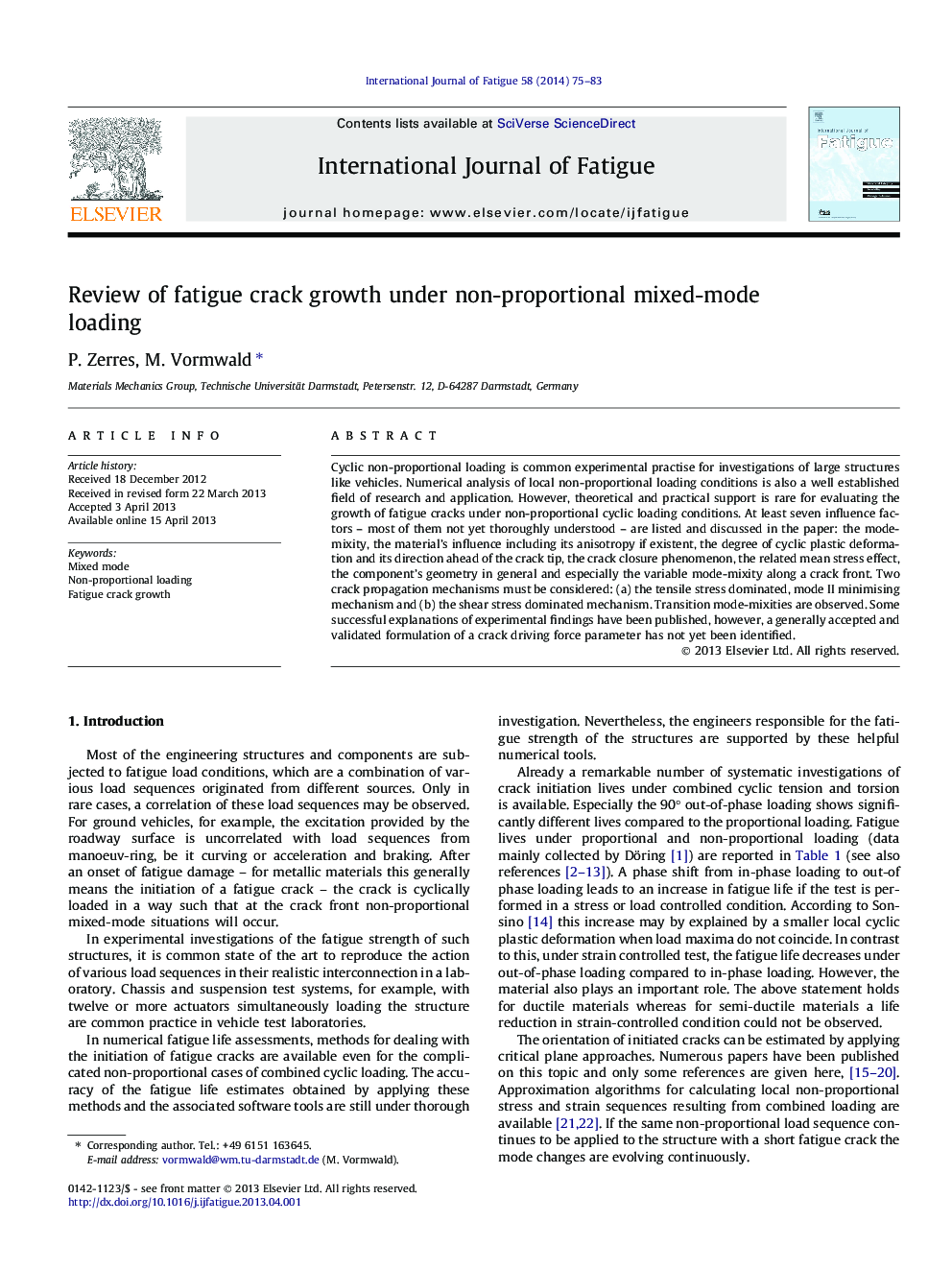| Article ID | Journal | Published Year | Pages | File Type |
|---|---|---|---|---|
| 780778 | International Journal of Fatigue | 2014 | 9 Pages |
•Literature on fatigue crack growth under non-proportional loading is reviewed.•Seven factors influencing fatigue crack growth under these conditions are identified.•The current best practise modelling approaches are presented.
Cyclic non-proportional loading is common experimental practise for investigations of large structures like vehicles. Numerical analysis of local non-proportional loading conditions is also a well established field of research and application. However, theoretical and practical support is rare for evaluating the growth of fatigue cracks under non-proportional cyclic loading conditions. At least seven influence factors – most of them not yet thoroughly understood – are listed and discussed in the paper: the mode-mixity, the material’s influence including its anisotropy if existent, the degree of cyclic plastic deformation and its direction ahead of the crack tip, the crack closure phenomenon, the related mean stress effect, the component’s geometry in general and especially the variable mode-mixity along a crack front. Two crack propagation mechanisms must be considered: (a) the tensile stress dominated, mode II minimising mechanism and (b) the shear stress dominated mechanism. Transition mode-mixities are observed. Some successful explanations of experimental findings have been published, however, a generally accepted and validated formulation of a crack driving force parameter has not yet been identified.
